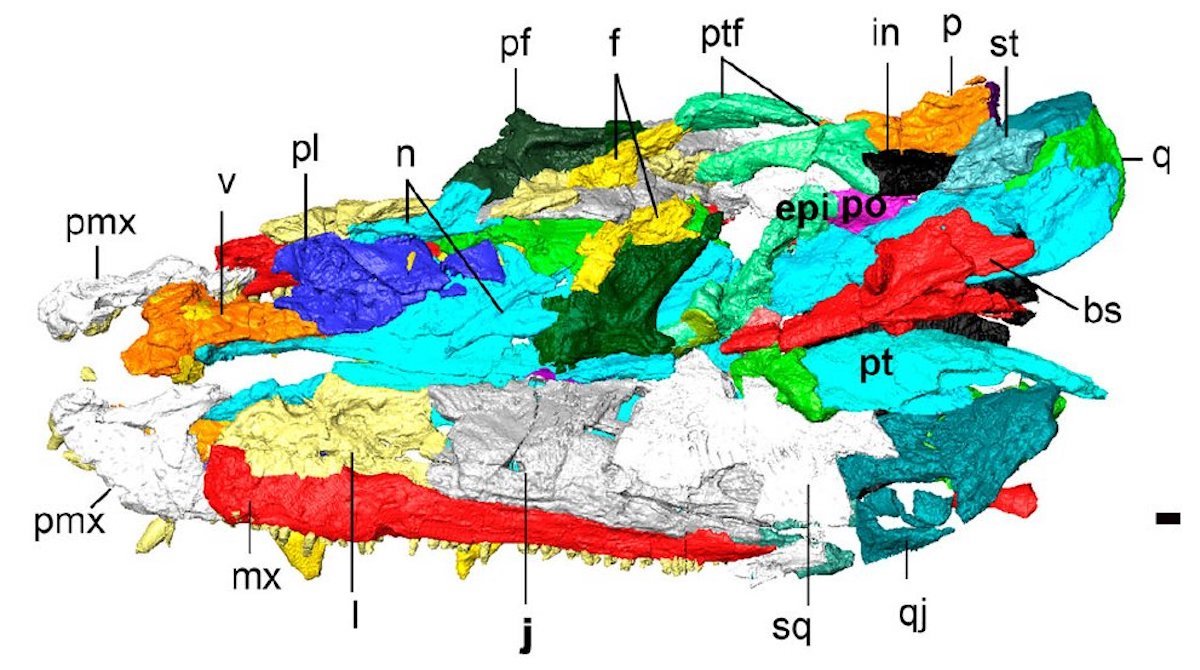How Scientists Rebuilt a 300-Million-Year-Old Scottish Swamp Monster From Shattered Fossils
Scientists successfully reconstructed the skull of a crocodile-like predator that’s been extinct for more than 300 million years using broken fossils, according to the British Natural History Museum. While the 3D visuals will help advance research of the early land animal, their existence also validates the process of creating them.
Dr. Laura Porro explained that for the project, the research team had complete specimens of the Crassigyrinus scoticus, but they were preserved in “fine-grained rock” that piled up over time and “squashed the fossils down.” As a result, they were shattered, flattened, and overall deformed.
Although they tried to reconstruct the animal skull before, the results were inconsistent. What made the difference this time were advances in CT scanning of four different samples.

“Once we had identified all of the bones, it was a bit like a 3D-jigsaw puzzle,” Porro said and explained that they started building the palate around the braincase and then figured out how everything else fits. She added: “As the bones were broken, rather than bent, we could reconstruct the specimen with a good degree of confidence.”
Scientists first discovered the Crassigyrinus about 100 years ago, but studying it has been particularly difficult due to the damaged fossils. Therefore, they consider the success of this project as a major leap in the study of the Carboniferous carnivore.
With a complete 3D visualization of a Crassigyrinus skull, scientists think they figured out a lot about the animal’s features and behavior. It’s described as a “tadpole from hell” with its huge teeth and big eyes, which would have allowed it to see in the dim coal swamps of Scotland as well as detect vibrations in the water.

“In life, Crassigyrinus would have been around two to three meters long, which was quite big for the time,” Porro said. “It would probably have behaved in a way similar to modern crocodiles, lurking below the surface of the water and using its powerful bite to grab prey.”
While there’s nothing alive today that’s closely related to the Crassigyrinus, scientists think it had a host of senses such as the ability to detect electric fields and different chemicals.
The next step for scientists is subjecting the reconstructed skull to a series of biomechanical simulations to see what it might have been capable of doing.
The post How Scientists Rebuilt a 300-Million-Year-Old Scottish Swamp Monster From Shattered Fossils appeared first on Outdoors with Bear Grylls.
